“So. You want to try the poop thing?” is a sentence I hear way more than you’d think.
Sometimes the “poop thing” relates to the feces of black bears, or sea birds, or coyotes. Today, it relates to North American plains bison (also known as “American buffalo”), which is a new species for me when it comes to up close and personal poop observation. My job is nothing, if not glamorous.
Then again, I’ve come to the Tallgrass Prairie National Preserve in Kansas to learn more about bison and their singular role in engineering North America’s grasslands. In fact, bison are considered a “keystone species” for prairies, which means they have a disproportionate effect on the overall health and productivity—the whole trophic cascade of life—in the ecosystem.
Since grazing is a big part of that, I should have expected the poop.
“This one looks good,” says Tony Capizzo, TNC’s Flint Hills Initiative director, as he kneels next to a bison patty about the size of a dinner plate. It’s a sunny day in June and we’ve been walking the prairie looking for a pat with just the right texture. Tony taps the one he’s found with the tip of the saw blade from the small silver multi-tool in his hand and smiles, “Got a good crust on it, but not too dried out.”
Flies scatter as he deftly cuts a neat four-inch circle in the top of that good crust, and then flips it up and aside, exactly like he was opening (forgive me) a bread bowl. And I think about two things: (one) yes, I can easily see why bison poop contributes to the nutrient cycle in prairie soils, and (two) I may never eat spinach-and-artichoke dip again. Ever.

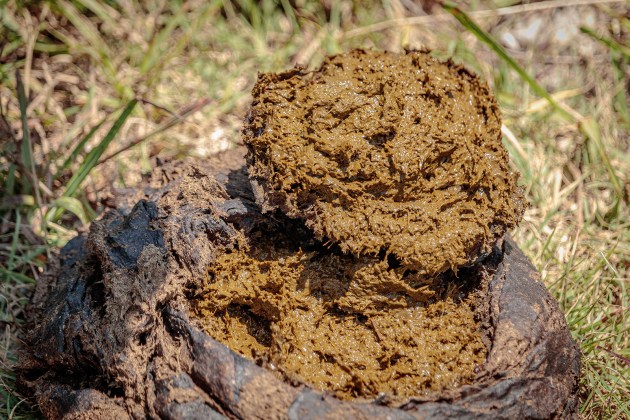
Bison: Keystone Species for Life on the Prairie
The loss of a favorite appetizer aside, I’m game. I crouch next to Tony and watch as he pokes through the “slightly used grass” of the pat with the tip of his blade. He’s looking, he tells me, for life.
It doesn’t take him long to find it.
A glossy, iridescent black beetle—a very small one—clings to the edge of the blade gleaming in the sunlight, a messenger from the largely unseen micro-ecosystem in bison poop. Urine, of course, has a role to play, too in prairie life. As do all bison life cycles and behaviors.
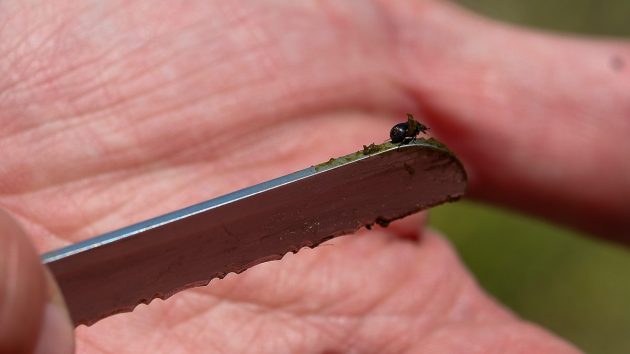
The ways bison graze and wallow, what they prefer to graze on and where and how they prefer to do it, the ways they move and poop and shed their fur, the ways they live and die—all of these behaviors once helped create (and can still shape), well, pretty much everything about the ecology of a prairie, like the one I’m standing on here in the Flint Hills.
It’s a fascinating story, and a really, really long one so we’re just going to hit a few high points on this whirlwind tour of key bison behaviors and why they matter.
Which brings us back to the bison pat and our first stop: Defecation and Urination.
Bison poop, it turns out, is an entire ecosystem of its own. According to the National Park Service (which has a great overview of the connections between bison poop and healthy prairies), “bison pies are elixirs of nutrients for the prairie, spreading seeds, fertilizing the soil, and attracting insects” like dung beetles and flies.
As bison graze the prairies, microbes in their stomachs, or, per NPS, in their “four-chambered digestive systems” get to work breaking everything down. Eventually, the microbes and any undigested plant matter that passes through those four chambers end up deposited on the prairie through bison urine and feces.
These bodily functions are foundational to the nutrient flow on grasslands. Both bison feces and urine provide sources of nitrogen, phosphorus, calcium, sulphur and magnesium. The insect communities they attract—as many as 300 different species of insects may be found in a single bison pat—are key to spreading nutrients to the rest of the prairie.
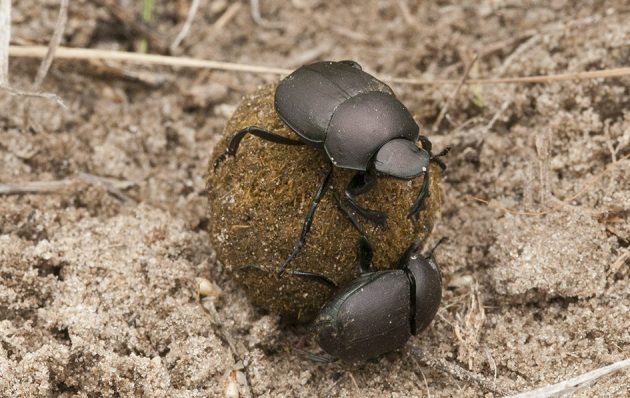
Dung beetles (tunneler beetles), for instance, move feces directly into the soil as they roll it into small balls and drag it into their underground tunnels. Flies and dweller beetles lay their eggs directly on pats (a single pat can produce as many as 3000 flies over two weeks). And more insects means more food for other prairie species, especially birds, amphibians, reptiles and bats.
Stop #2: Grazing
Bisons’ most obvious influence on prairie health is the way they graze. They tend to be selective eaters, and prefer native prairie grasses, such as little bluestem, and sedges (a grass-like plant with sharp edges and solid blades) over forbs (broad-leaved plants) .
That selectivity for grasses and sedges leads naturally to selectivity in grazing locations. Bison go where their favorites are—and where their favorites are is influenced by fire or previous grazing that creates high-quality food. While it’s true that bison tend to drift across the prairie as they graze, that doesn’t mean they don’t return to the same places in the same season. They return frequently to burned and previously grazed areas to forage on the regrowth.
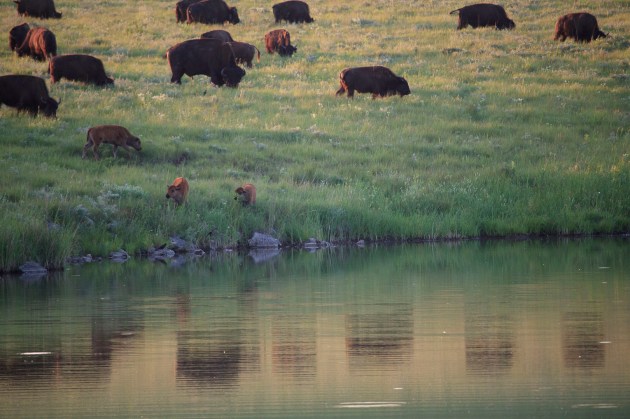
Ultimately, bison grazing selectivity creates what land managers call a mosaic or patchwork of grazed and ungrazed areas that cycle through different species year over year as the plants and animals react to the changes caused by grazing.
This patchwork allows, for example, more light to reach plant species that may have been shaded out by taller species. Grazing can also reduce competition for water and nutrients between plants as some species flourish in the changed conditions, and others aren’t as successful.
As plant communities change and change again, they also create habitats that attract different grassland species. Thirteen-lined ground squirrels and horned larks, for example, really like heavily grazed areas.
It’s important to note that cattle grazing can also be beneficial for prairie health, and in the long absence of bison on the Great Plains, grazing cattle did a lot to help preserve the prairies, especially here in the Flint Hills. Unlike bison, cattle don’t wallow, and they also tend to prefer forbs over grasses. In grazing-dependent ecosystems where cattle are present, but bison are absent, land managers often use additional tools to promote and protect prairie health.
Stop #2 ½: Grazing + Fire
America’s sweeping grasslands are, in many ways, the legacy of glaciers, Indigenous Peoples, bison and fire. For generations, Indigenous Peoples of the Great Plains set the grasslands on fire because they knew burned areas attracted the bison that were the foundation of their cultures and economies. With the slaughter of the bison in the 19th century, and the ensuing violence against Native peoples, the land lost its stewards, its fire and its largest grazers.
The violence also severed Native Nations’ historical, cultural, traditional and spiritual relationship with buffalo. As the buffalo have returned from the thinnest edge of extinction, they have also been returning home to the Tribes. The connection between Native Nations and buffalo is intricate and sacred and goes far beyond the role of bison in an ecosystem. The cultural story is not mine to tell, but it’s important to acknowledge that the connection between fire and grazing is not new.
Given a choice, bison (and cattle, too) will prefer to graze on (relatively) recently burned areas.
The combination of fire and bison helps keep prairie plant communities diverse. And a diverse prairie tends to be a healthy one. One quick way to assess grassland health (especially if you aren’t up on all of your native prairie plants) is to look at structure, listen for sound, and watch for color.
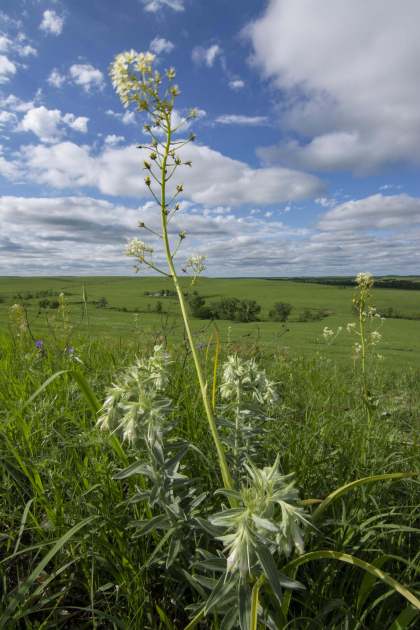
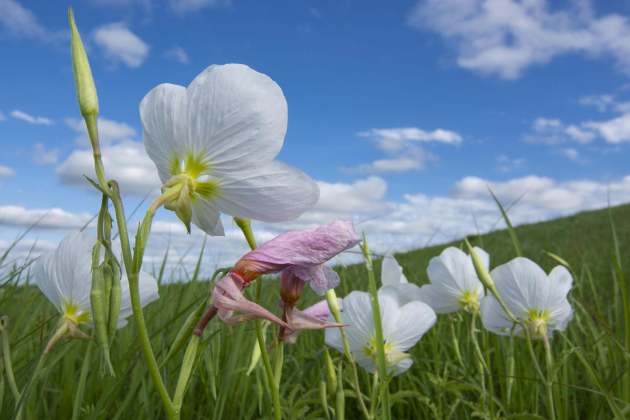

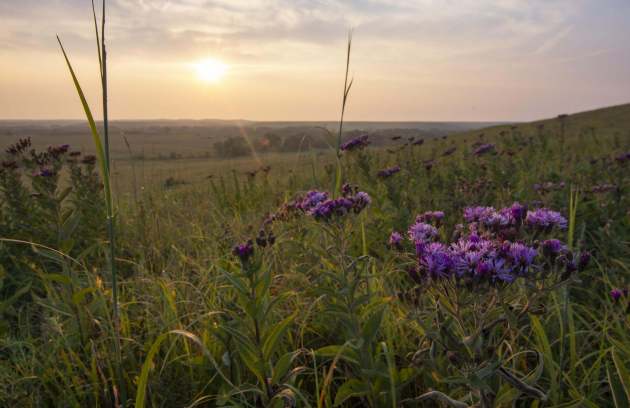
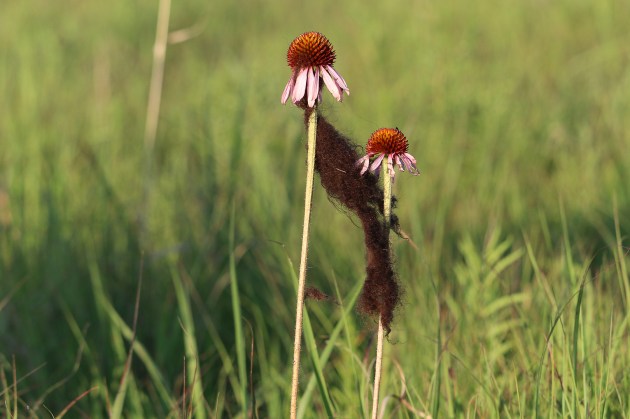
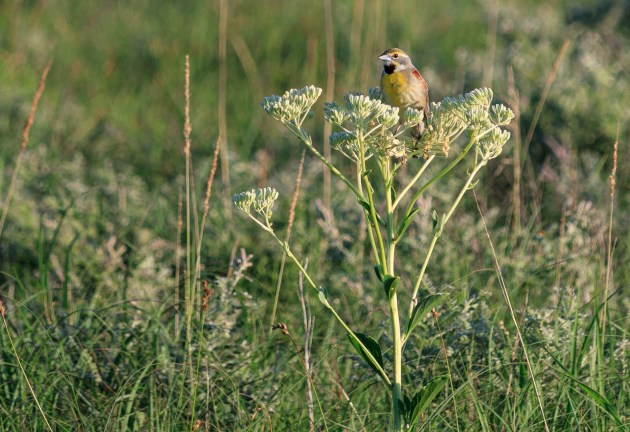
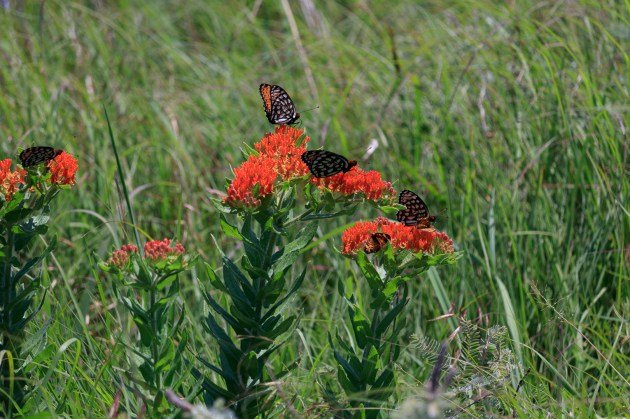
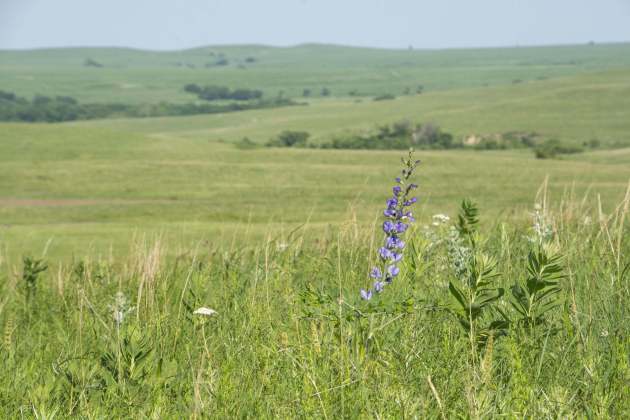
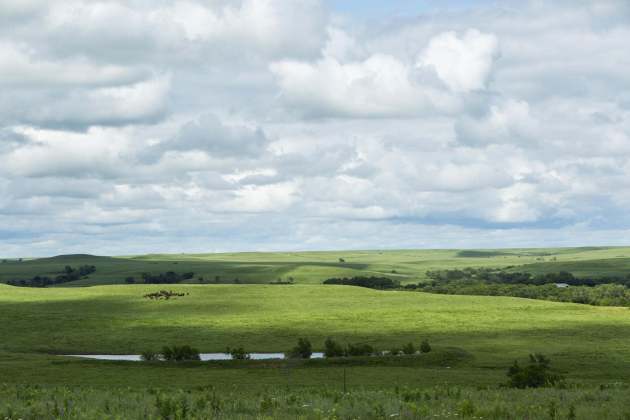
“Here,” Tony says, as he stops the truck and we hop out. “This was burned two years ago and the bison spent a lot of time creating a grazing lawn, and that selective pressure on the grasses has really given space for a lot of other plants.”
I can see it: the plants are of varying heights (structure), there are wildflowers blooming (color), and the air is full of the clicks and buzzes of insects (which I can’t identify by ear) and the calls of grassland birds, including a dickcissel (which, to my delight, I can).
Stop #3: Wallowing
If you’ve never seen a more-than-1000-pound animal roll around on the ground, the sight can be a little disconcerting.
“It really can,” Tony says as I stare at a bison and try to make it wallow with the power of my thoughts. “A preserve visitor once called to say they’d seen a bison struggling to get up, so I went out to see if we had one in distress. They all looked really healthy, and then one wallowed and I realized what the visitor probably saw.”
As in, they saw a bison sink to its knees and then kind of tip over, kick all four hooves in the air (likely with an impressive cloud of dust), and then sort of heave itself back upright. Repeatedly. It’s a little like watching a toy boat capsizing and then righting itself in a bathtub. And it does look uncomfortable. So why do it?
Apparently, wallowing serves many purposes. Males and females do it. It may help the bison get rid of flies and other biting insects, or shed their winter fur in preparation for hotter conditions, or scratch places they can’t reach any other way. Or all of the above and more.
Wallowing clearly benefits both bison and the prairie.
The animals tend to use the same places to wallow and over time, with so many large animals rolling around on the same spot, the soil gets packed down. Compressed soils (and changing chemical compositions caused by bison urination and defecation in the wallow) favor the growth of different kinds of plants, and if a wallow is deep enough and the soil hard-packed enough, it can fill with rainwater and become an ephemeral wetland.
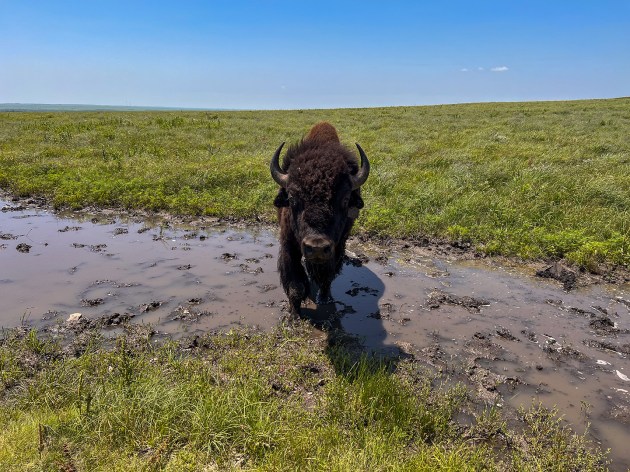

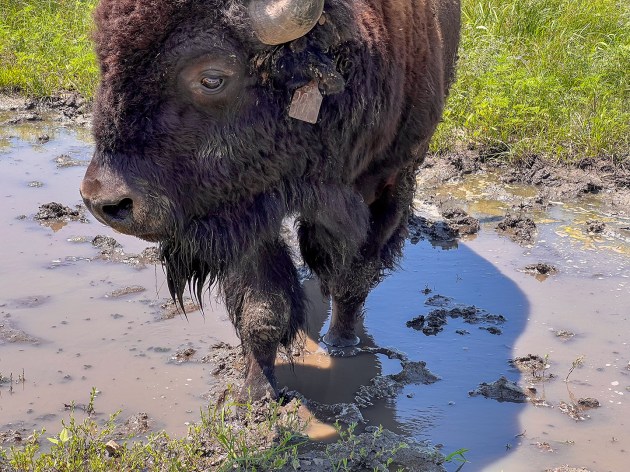
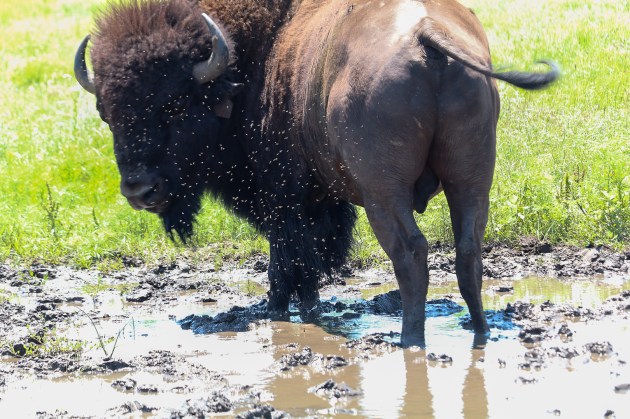

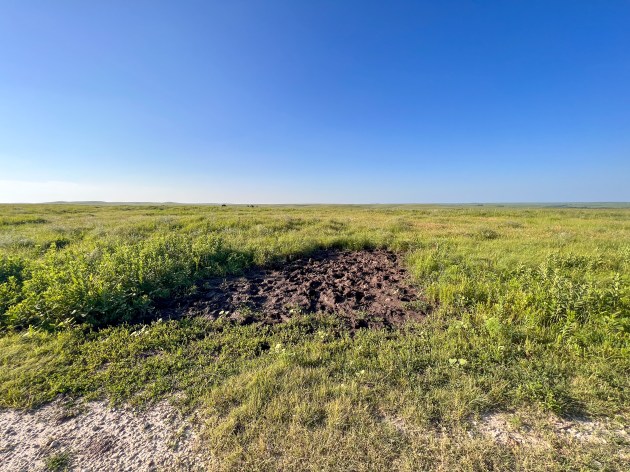
Wallowing bison are not the only source of ephemeral wetlands on the prairie, but they can play a significant role in creating them. Many migratory shorebirds, like long-billed curlews, rely on such wetlands to complete their lifecyles.
Tony tells me that a historic bison wallow can still be visible—even many decades after bison last used it. So, of course, I want to see one.
We pull into an area of the preserve that’s off-limits to bison, hop out of the truck, and suddenly, I’m standing next to history. “There are a lot of relic wallows on the preserve,” he says. “This one doesn’t have bison to maintain it so it’s vegetated over, but you can identify it by the shape—a kind of arc—the depression, and the different plant communities that still live here because the soils support them.”
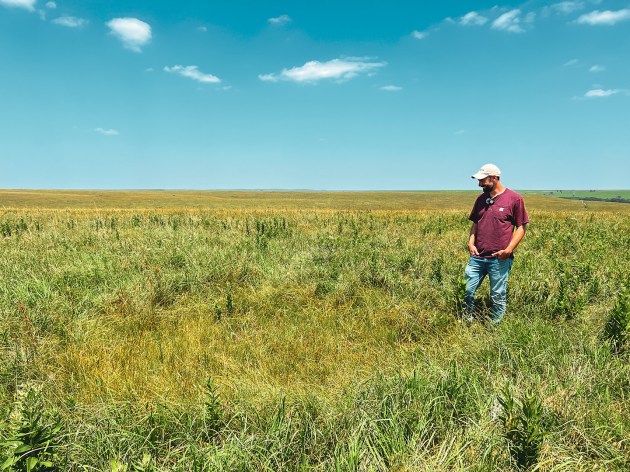
No bison has wallowed here for more than 150 years, but the mark of their passing remains.
Applied Science with Bison
For TNC, returning bison to the land is a restoration goal and a conservation tool designed to help restore, create and maintain diverse plant communities and high-quality wildlife habitat. On TNC preserves, like the Tallgrass Prairie National Preserve, co-managed by TNC and the National Park Service, a bison’s main job, so to speak, is to be itself.
But bison, as important as they can be, are not a panacea. Different types of grasslands—tallgrass, shortgrass and mixed grass and the species within them—have different responses to different bison behaviors, the timing of those behaviors, and many other variables. The need for ongoing research into all those variables, and the relationships between the presence of bison, other grazers, and the long-term health of prairies is another reason TNC has bison on our preserves.
The ability to do that kind of applied, on-the-ground science is also one of the main reasons TNC maintains a network of preserves. It’s also why we foster extensive, long-term preserve-based research partnerships with universities, state and federal agencies and why, across the Great Plains, we work closely with Indigenous partners, as well as towns, ranchers and farmers.

Ultimately, prairies are living and they have cycles—and cycles within cycles—like all living things. Chris Helzer, TNC’s director of science in Nebraska, talks about thinking of a prairie as like a ball rolling around in a bowl.
“As it rolls around—because it’s getting pushed by drought, grazing, fire—it gets pushed into different places within the bowl. And every time it moves to a different place,” he says. “It looks different. But as long as it stays within the bowl, it keeps its identity as a prairie.”
In that way, healthy prairies are a bit like streams in that you can never step in the exact same one twice. They are essentially ever-changing and (if they stay healthy) ever the same. Poop, wallows, grazing, fire and all.
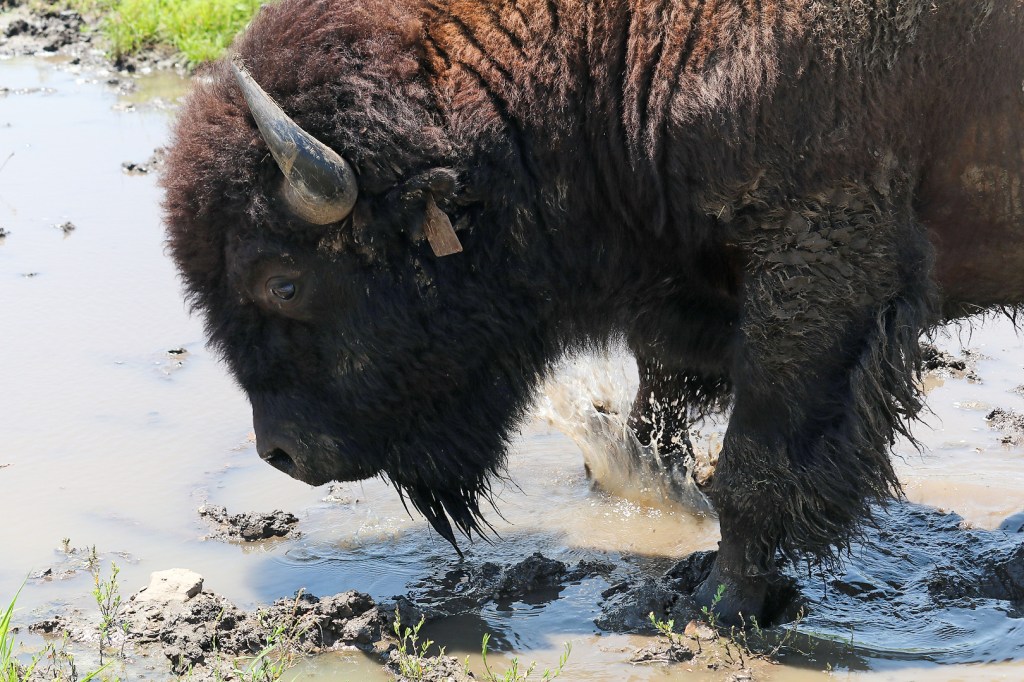



Join the Discussion
18 comments